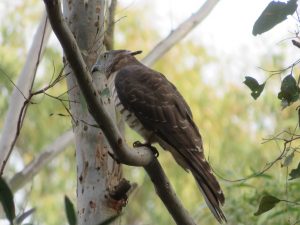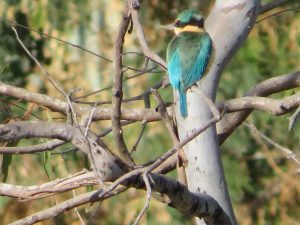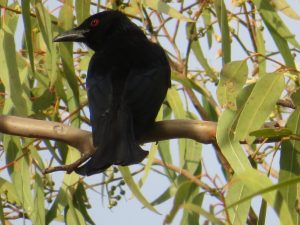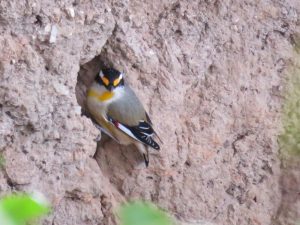Since 2008, Charles and Jenny Ivin have been coordinating and leading at least ten bird walks each year in set locations selected as being representative of bird habitats along Kedron Brook.
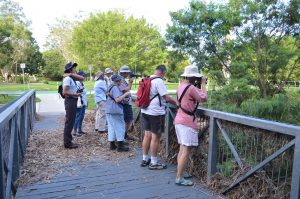
…This project aims to accumulate data on bird life along Brook, specifically those variations in birds species noted together their distribution…
A similar program has been set up each year but it is based upon a randomisation of actual sequence of locations to be visited over year. This step is to minimise any seasonal effects on number and type of birds species to be found at a particular location. The apparent absence of a particular species of bird at such a location for one or so years may possibly be explained by a migration influence.
Although we have a number of catchment members that are experienced birders, leadership of Dawn Muir, supported by Esther Townsend (both experienced birders in Birds Queensland) has been vital. Their contributions to success of this project have been most appreciated.
The program for 2017 is available now. Interested persons should also check events listing on Facebook page to keep up to date on next walk and possible changes due to poor weather or leadership availability.
General precautions to be used during these observations
These outings need to be carried out in a rather small group to reduce disturbance of, often, quiet elusive birds. It takes members of reasonable experience to be able to observe and identify birds correctly. However, there has been occasional opportunity for a new keen birder to join and learn ropes on most of our outings. Please check our executive team in Contact section below for further information.
Birders should bring their own personal food and water requirements and sun and skin protection (sunscreen and insect repellent). Although most outings are conducted along made paths, sometimes it is necessary to move carefully into bushland to more closely observe bird movements. Clothes and footwear should be chosen to suit these conditions, where possible. Traveling through natural flora and fauna habitats is usually of relatively low risk (compared risk of crossing busy roads) but skin irritations from harmful plants or tick bites can occasionally concern sensitive individuals.
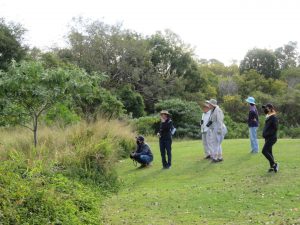
Nundah (Albert Bishop Park), Sunday, 2 July 2023.
Eight enthusiasts gathered on a fine partly cloudy morning by Nundah Cemetery entrance on Hedley Avenue in Nundah. From here we made our way along Cemetery boundary through Albert Bishop Park to Schulz canal. We also welcomed Lilian Nakahira into group.
A total of 43 species was identified over morning.
A sharp-eyed Esther spotted a Sacred Kingfisher beside Schulz canal and Fausto spotted a Striated Pardalote nesting in bank beside Schulz canal, which we all got to observe and enjoy. Well done!
A few photographs (all taken by Peter Blackmore) attached below from morning walk.
